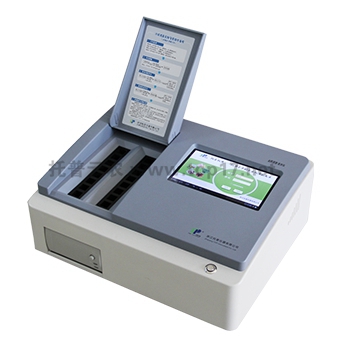Steps for testing pesticide residues in celery with pesticide residue detector
Celery is a common vegetable, and it is eaten at a high rate on weekdays. It can be made into a variety of delicacies, such as celery shrimp, dumplings with celery stuffing and so on. But celery is also a vegetable that is prone to pesticide residues. Because many vegetable farmers do not understand the safety interval for using pesticides, they use or abuse pesticides in violation of regulations, and long-term consumption of vegetables with excessive pesticide residues will have a certain impact on human health. Therefore, it is also very necessary for the relevant departments to do a good job of sampling pesticide residues.
How to quickly detect vegetables with excessive pesticide residues in the huge market is also a huge test for the staff. However, with the advancement of science and technology, pesticide residues in fruits and vegetables can be quickly determined with the help of professional pesticide residue detectors .

In the past, people would use pesticide residue rapid test paper for testing. Although this method has a short detection time, the accuracy rate is low, and it can only detect qualified or unqualified, and the specific content cannot be measured. Nowadays, professional institutions generally use pesticide residue detectors for determination. The advantage of this technology is that it can detect up to 16 samples at a time and the accuracy is also high.
Use pesticide residue detector to test celery pesticide residue steps:
1. First prepare the various tests used in the experiment:
Extraction solution: Pour the extraction solution powder into a jar, take a small amount of 510ml distilled water, shake it well, and then pour other distilled water into it for dilution.
Enzyme solution: add 3.1ml of extract to each bottle of enzyme solution, shake well and use.
Substrate: Add 3.1ml of distilled water to each bottle of substrate, shake well and then use.
Chromogenic agent: Add 32ml of extract into the chromogenic agent bottle, shake well and use.
2. Then take 2 grams of celery sample, cut into about 25px square pieces, put them into the sample processing bottle, add 10ml of extraction solution, shake for 5 minutes and take the supernatant for two minutes.
3. Then take a 10ml colorimetric tube, add 2.5ml of the extract, then add 100μl of enzyme solution to the test tube, add 100μl of color reagent, and leave it for 15 minutes after mixing. When the time is up, add 100μl of substrate and mix well. Pour it into a cuvette immediately and put it into the instrument for testing.
4. Take another test tube to make a test solution, add 2.5ml of the sample to be tested, and then add 100μl of enzyme solution to the test tube, add 100μl of color reagent, mix and leave it for 15 minutes, and add 100μl of substrate immediately after the time is up. Evenly, immediately pour it into a cuvette and put it into the instrument for testing.
5. Turn on the power switch of the instrument, enter the account password, and click login to enter the test page; then put the cuvette containing the control solution into the first channel test, click the [Control Test] button, the control test result will appear after 3 minutes;
6. Finally, perform sample test. Put the cuvette containing the sample solution to be tested into each detection channel, click the [Sample Test] button, the control test result will appear after 3 minutes, and the result value will show whether the pesticide residue result is qualified.
Face Spray,Water Mist Sprayer,Facial Hydrating Spray,Handheld Face Steamer
Zhongshan Lianwei Electrical Technology Co., Ltd. , https://www.zslwwaterpump.com